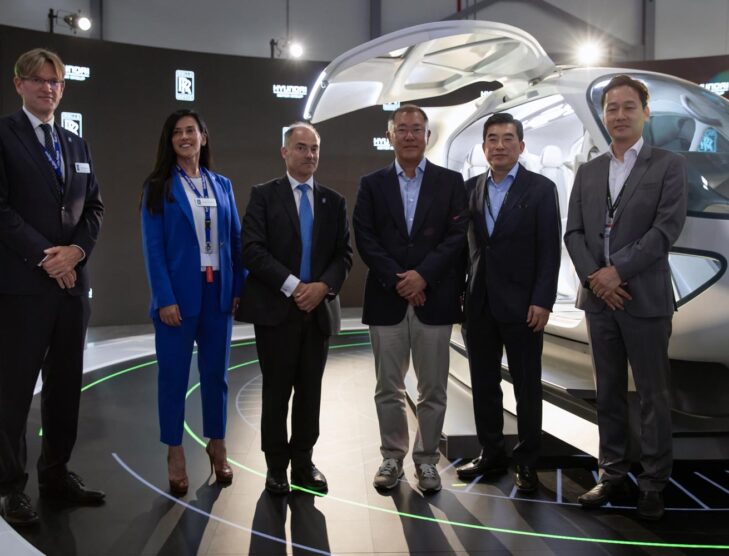
Rolls-Royce and Hyundai sign MoU to pave way for advanced air mobility
Rolls-Royce and Hyundai Motor Group signed a Memorandum of Understanding (MoU) to collaborate on advanced air mobility solutions. This partnership will allow both companies to leverage each other’s strengths in order to bring battery-electric and hydrogen fuel cell electric solutions to the Urban Air Mobility (UAM) and Regional Air Mobility (RAM) markets. The MoU is part of a larger vision for sustainable aviation.
The MoU, which focuses on the development and industrialisation of electric propulsion aviation systems based upon hydrogen fuel cells, has five strategic aims:
- Collaborating on the technology development and requirements of power and propulsion systems for Hyundai’s Advanced Air Mobility Division.
- Collaborating on the industrialisation of Rolls-Royce power and propulsion systems for the Advanced Air Mobility (AAM) market.
- Development of electric propulsion systems based upon hydrogen fuel cells as an energy source for Hyundai’s Regional Air Mobility (RAM) platforms.
- Collaborating to bring to market a joint fuel-cell electric propulsion system to the wider AAM market.
- Delivering a joint fuel-cell electric aircraft demonstration by 2025.
The announcement comes as the global advanced air mobility market is forecast to be worth USD1.5 trillion by 2040, according to a recent report by Rolls-Royce. With rising concerns about climate change and urban congestion, advanced air mobility solutions are seen as a way to decarbonise the aviation sector and improve urban mobility.
Rolls-Royce is a world-leading provider of power and propulsion systems, with over 100 years of experience in aviation.
Hyundai Motor Group is one of the largest automakers in the world, with a strong focus on innovation and advanced technologies.
The MoU was signed at Hyundai Motor Group’s U.S.-based unit, Supernal’s booth at the Farnborough Airshow, and was attended by Warren East, CEO of Rolls-Royce, Grazia Vittadini, chief technology and strategy officer, and Rob Watson, president of Rolls-Royce Electrical, as well as Euisun Chung, executive chair of Hyundai Motor Group, Jaiwon Shin, president and head of the AAM Division of Hyundai Motor Group, and Jaeyong Song, vice president of the AAM Division of Hyundai Motor Group.
Rob Watson, President, Rolls-Royce Electrical, said: “We are delighted to partner with Hyundai Motor Group which provides a valuable opportunity to leverage and build on the capabilities each company brings from the aerospace and automotive sectors. The Advanced Air Mobility Market offers great commercial potential, and this collaboration supports our joint ambitions to lead the way in the Advanced Air Mobility Market. It is also another demonstration of Rolls-Royce’s role in delivering the solutions that will enable passengers to travel sustainably and help deliver net zero carbon by 2050.”
Hyundai’s hydrogen fuel cell system in an all-electric aircraft propulsion system may offer a zero-emission, silent and reliable on-board power source that enables scalability in power offerings as well as long distance flight range. This makes it an ideal power source for advanced air mobility applications such as urban air mobility and regional air mobility. Hyundai will work with Rolls-Royce to bring hydrogen fuel cells, storage systems and infrastructure to the aerospace markets, and advance this technology into Hyundai’s RAM Vehicles and Rolls-Royce all-electric and hybrid-electric propulsion system offerings. This will help to pave the way for advanced air mobility solutions that are more sustainable and environmentally friendly.
Rolls-Royce is committed to ensuring that its new products will be compatible with net zero carbon operation by 2030, and all it’s products will be compatible with new zero carbon by 2050, while Hyundai Motor Group’s Supernal unit is aiming to begin eco-friendly commercial services of UAM businesses in the U.S. in 2028, and RAM services in 2030.








.jpg)
